#al di meola
Text


An “Intellectualized Rock ‘n’ Roll Artist:” Robbie Robertson Dead at 80
Robbie Robertson is dead.
The Band co-founder, guitarist and primary songwriter died Aug. 9, his management said in a statement.
“Robbie was surrounded by his family at the time of his death,” the statement said.
Robertson was 80; no cause was given.
“May Robbie Robertson rest in peace and love,” Todd Rundgren’s Spirit of Harmony Foundation said.
His death leaves Garth Hudson, 85, as the sole surviving Band member.
Robertson was an “intellectualized rock ‘n’ roll artist,” Michael Des Barres said.
“Robbie Robertson is so important in the history of rock ‘n’ roll music, bringing Americana and country music together … he will be remembered,” Des Barres said.
Given Robertson wrote “The Night They Drive Old Dixie Down,” “The Weight,” “The Shape I’m In,” “Stage Fright,” “Up on Cripple Creek” and scads of others, that is an understatement.
“Robbie Robertson’s words wove the fabric of the songs we all wear,” Joe Newberry said. “Rest in peace.”
“The loss of Robbie Robertson is heartbreaking,” Kiefer Sutherland said. “Canada has lost an icon, and music has lost a poet and a scholar.”
Robertson started - as his Band mates Hudson, Levon Helm, Rick Danko and Richard Manuel did - with Ronnie Hawkins and the Hawks. They then became Bob Dylan’s band; then simply the Band.
“One of the all-time greats,” Tinsley Ellis said of Robertson.
When the Band split, Robertson’s output slowed considerably and he made just six LPs released between 1987 and 2019. But that didn’t faze Al Di Meola’s fandom.
“I absolutely adored Robbie Robertson,” the guitarist said. “His (self-titled) solo debut … is to this day my all time favorite pop album. … Robbie, rest in peace.”
8/9/23
#robbie robertson#the band#garth hudson#levon helm#richard manuel#rick danko#ronnie hawkins and the hawks#bob dylan#kiefer sutherland#al di meola#michael des barres#tinsley ellis#spirit of harmony foundation
80 notes
·
View notes
Text

Hi Carlos, you can call me Al.
#guitar#photography#collection#gas#love#guitars#prs guitars#prs#carlos santana#al di meola#signature guitars#prism#ricfreak
20 notes
·
View notes
Text

18 notes
·
View notes
Text
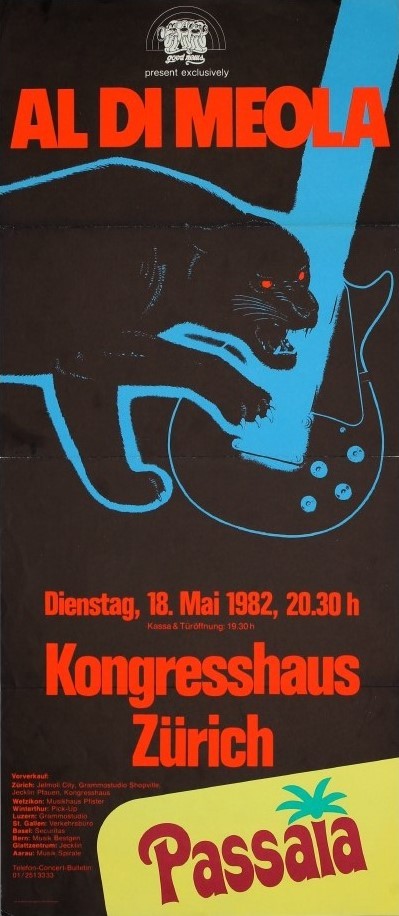
1982 - Al Di Meola - Kongresshaus in Zürich (Suisse / Schweiz / Switzerland)
13 notes
·
View notes
Text
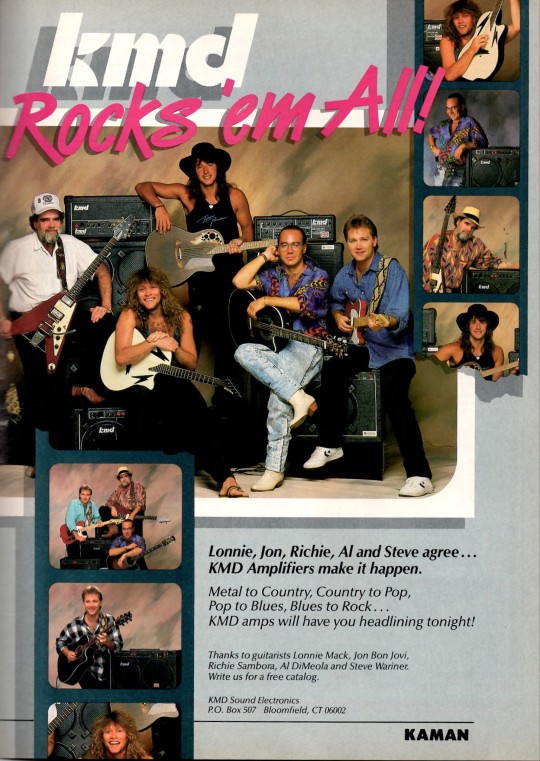
#circus#circus magazine#ad#kaman#kmd sound electronics#lonnie mack#jon bon jovi#richie sambora#al di meola#steve wariner
8 notes
·
View notes
Text
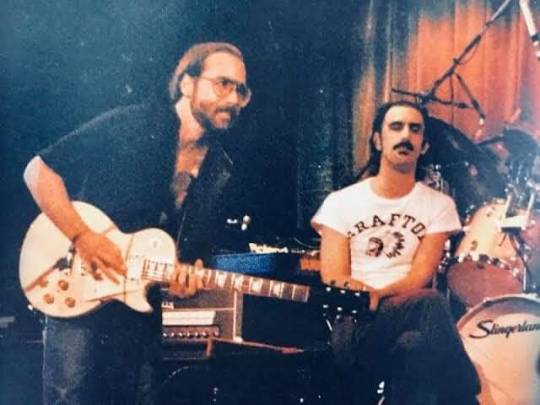
Al DiMeola and Frank Zappa
12 notes
·
View notes
Text
Stanley Clarke: Master of the Bass, Innovator of Jazz Fusion
Introduction:
A small group of artists have changed the genre of jazz fusion by pushing the limits of their instruments. Among these musical pioneers is the renowned bassist, composer, and bandleader Stanley Clarke. With his unmatched technical ability, avant-garde playing approach, and ground-breaking compositions, Clarke has made an enduring impression on the jazz community and beyond. We go…

View On WordPress
#Al Di Meola#Art Blakey#Chick Corea#George Duke#Herbie Hancock#Horace Silver#Jazz Bassists#Jazz History#Jean-Luc Ponty#Joe Henderson#Journey to Love#Light as a Feather#Return to Forever#Romantic Warrior#School Days#Stanley Clarke#Weather Report
8 notes
·
View notes
Text
youtube
L'album seminale "Friday Night in San Francisco" fu pubblicato il 10 agosto di giusto 42 anni fa.
4 notes
·
View notes
Text

Wayne Shorter Dies at 89
- “It’s time to go get a new body and come back to continue the mission,” jazz great reportedly says
Wayne Shorter, the saxophonist and band leader who most famously played with Miles Davis and Weather Report, has died at 89.
No cause was given in a Facebook post that said Shorter died at 4 a.m. local time March 2.
“Wayne Shorter peacefully continued on his immense journey into the unknown,” the post said. “He was surrounded by loving family. In his words, ‘It’s time to go get a new body and come back to continue the mission.’”
Shorter got his start in the late 1950s in Art Blakey’s Jazz Messengers. The following decade was spent as a key member of the band now known as Miles Davis’ Second Great Quintet. The saxophonist would later co-found Weather Report and record more than 20 albums under his own name.

“Goodbye to a giant,” Spyro Gyra said on social media.
Charles Lloyd was a student at USC when he met the man he called “the maestro.” Thus began a lifetime of professional collaboration and personal friendship.
“Wayne elevated the art form of sound as only he could,” Lloyd wrote on social media. “I loved him straight through - he was a deep spirit on a human journey and he blessed the planet, all of the solar systems and beyond.”
Al Di Meola recalled touring with Weather Report in 1978 and said he spent the time after every show talking with Shorter backstage.
“(I) could never tell if Wayne was talking some deep shit or some spaced-out genius stuff,” the guitarist said. “Anyway, he spoke often like he played - in short bursts. One of the God-like giants leaves us. Thanks for the legacy, Wayne.”
Vocalist Dee Dee Bridgewater called Shorter “one of the greats,” whose kindness and generosity matched his talent. The jazz world, she said, feels the loss.
“We are in mourning,” Bridgewater said.
As a session player, Shorter would cross over into rock with a jazz bent, playing on recordings by Steely Dan, Joni Mitchell and others.
“He took the horn to places other saxophonists weren’t even imagining it could go,” Vernon Reid said. “Wayne liberated it from the shadows of Bird (Charlie Parker) and Trane (John Coltrane).”
3/2/23
#wayne shorter#miles davis#weather report#art blakey#art blakey’s jazz messengers#spryo gyra#charles lloyd#al di meola#dee dee bridgewater#steely dan#joni mitchell#vernon reid#living colour#charlie parker#john coltrane
79 notes
·
View notes
Text

10 notes
·
View notes
Text

Dixie Dregs similar artists based on Spotify data
#map tag#music map#ego network#Dixie Dregs#southern rock#jazz fusion#Eric Johnson#Al Di Meola#Tony Levin#Greg Howe#Jean-Luc Ponty#progressive rock#classic rock
8 notes
·
View notes
Text
Stanley Clarke, Al Di Meola, Jean-Luc Ponty - The Rite Of Strings
https://www.discogs.com/release/853788-Stanley-Clarke-Al-Di-Meola-Jean-Luc-Ponty-The-Rite-Of-Strings
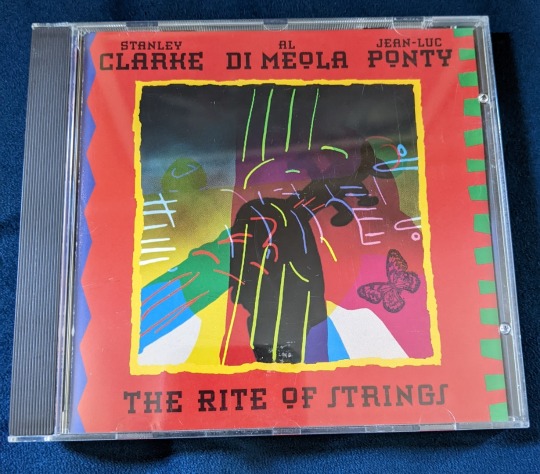
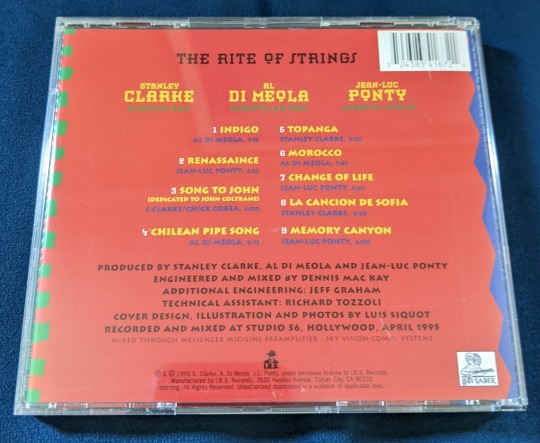
The 90s were a strange, rough time for jazz, particularly 70s fusion luminaries like the trio of Clarke, Di Meola, and Ponty assembled here. Those familiar with the genre will know Stanley Clarke and Al Di Meola from Chick Corea's groundbreaking jazz-rock fusion group Return to Forever, and Jean-Luc Ponty from John McLaughlin's equally groundbreaking jazz-rock fusion group Mahavishnu Orchestra (or, for the less jazz-inclined, his work in the years prior with Frank Zappa's also-equally-groundbreaking avant garde art rock group, The Mothers of Invention).
By the 90s all three players had enjoyed long and successful solo careers, but things were slowing down substantially for the genre as a whole. The 80s saw jazz reach its highest level of mainstream appeal since the glory days of the 50s and 60s with smooth jazz and lighter synth-laden jazz fusion gaining major traction with non-jazz listeners. At the same time, those accessible and soft-edged sounds and styles alienated more serious jazz fans. The rise and fall of mainstream 80s jazz sounds led to serious disinterest in new jazz releases in the 90s, both from jazz enthusiasts, who were disillusioned by the smooth sounds of the 80s, and from the mainstream listeners, who had almost completely moved on as harder-edged grunge and alternative rock dominated the radio waves and made the synthy adventures of the 80s feel instantly passé. This led to a number of embarrassing outings from more trend-focused jazz artists trying to recapture the attention they found in the 80s. Many others found themselves returning back to basics, with many of the jazz elite releasing more straight ahead albums in an attempt to recapture the hearts of more serious jazz listeners.
Thankfully for us, this album falls mostly in the latter category. It follows in the steps of Al Di Meola's highly successful Guitar Trio recordings with John McLaughlin and Paco de Lucia (the final of which would be recorded the following year, the prior two having been recorded in the early 80s), as a simple acoustic trio recording with a focus on great compositions and highly technical performances. I'll note that while the credits only list acoustic instrumentation, Al does sneak in a touch of guitar synth; which, in his defense, is a much more restrained amount than many of his solo records of the era. Most tracks also double Al's guitar, splitting rhythm and lead to the left and right channels. While this may be his slightly inflated ego at work (not that I can blame him, my ego would be slightly inflated if I could play like that too 🙂), it serves the tracks well and fills the large sonic space between the bass and violin out nicely.
The album clocks in at 55:34, spanning 9 tracks. Writing credits are split evenly to three tracks per player, with the sole (partial) exception being Stanley Clarke's Song to John, which was co-written with Chick Corea for Clarke's 1975 album Journey to Love. Sonically, Rite of Strings is incredibly well recorded and mixed. The imaging and soundstaging is excellent (although the soundstaging is occasionally confused by Al's overdubs, creating an odd sense of two Al clones shredding at once seated between the other two players). I'm particularly impressed with the sound of Stanley's bass; it has a very deep, resonant sound while maintaining good articulation and harmonic clarity. Often jazz recordings drop the ball on the bass, with it either sounding flubby and inarticulate or clicky and shallow. The engineers did a spectacular job of capturing the full range of the instrument while still leaving plenty of room for the remainder of the trio. Also, while I alluded to it earlier I'd like to spell it out: the compositions and performances here are truly top-notch. The players have excellent synergy, and walk the fine line between technical showmanship and performing compelling compositions in a way that serves the composition. This is a must-listen for anyone who enjoys any of the three players on the album, and is a worthy introduction to any or all of the three for those not familiar. Which brings us to the well-buried lede of this post: this album is criminally underrated. I think if this had been recorded anywhere from 10 to 20 years prior it would have received a much higher degree of notoriety. As it stands, it's one that even many jazz fans seem to be unaware of. It charted reasonably well at #4 on the contemporary jazz charts, but that was a shallow pool that few were wading in at the time. Today it seems to be mostly off the radar. The Wikipedia page is painfully sparse, and very little information is available surrounding the recording and release of the album. While I have very little reach here, I hope this inspires one or two people to check this one out.
The copy in front of me is the standard mass-market US CD release. In fact, this is almost the only release. It was released on Gai Saber, a short-lived label with only a small handful of releases from '95 & '96, with additional distribution by I.R.S. (yes, the college rock label, no, not the federal government, although either would be equally nonsensical in context). Notably both Gai Saber and I.R.S. would fold the following year in 1996; I would guess the implication of hard financial times explains I.R.S.'s baffling choice to involve themselves in this release, which is profoundly off-brand for a label better known for groups like R.E.M. and Oingo Boingo. While the CD was released in a number of markets, the different international editions appear to be identical aside from the usual differences in copyright text, etc. There was one cassette version released in the US, one promo version of the CD, and a Russian bootleg of the CD (a common occurrence at the time due to scarce music distribution across the board in most parts of the former Soviet Union). The album has never been issued on vinyl and has never been officially reissued. The booklet is a simple two page affair with all of the essentials and nothing more. The graphic design is definitely a product of its time, with a certain Old-El-Paso-meets-90s-Taco-Bell je ne sais quoi, topped off by a particularly uninteresting piece of digital abstract cover art from Luis Siquot (rightfully better known for his contributions to typesetting than for his art). Needless to say, the look of the album certainly isn't doing it any favors when it comes to attracting the attention of modern listeners. Like many long-out-of-print albums, it isn't currently available on streaming beyond some rando's YouTube upload. Luckily, the CD is very affordable used at the time of writing due to general lack of interest/awareness.
Anyways, that's all for today folks! Give this thing a listen if you can. Hoping to be able to continue posting a bit more frequently now. Til next time, may your bass be full in the mix and may your labels stay afloat.
#album review#random collection item#discogs#jazz#jazz fusion#CD#Stanley Clarke#Al Di Meola#Jean-Luc Ponty#The Rite Of Strings#out of print#now spinning
1 note
·
View note
Video
youtube
Mediterranean Sundance/rio ancho-por Paco de Lucia e Al Di Meola
1 note
·
View note


